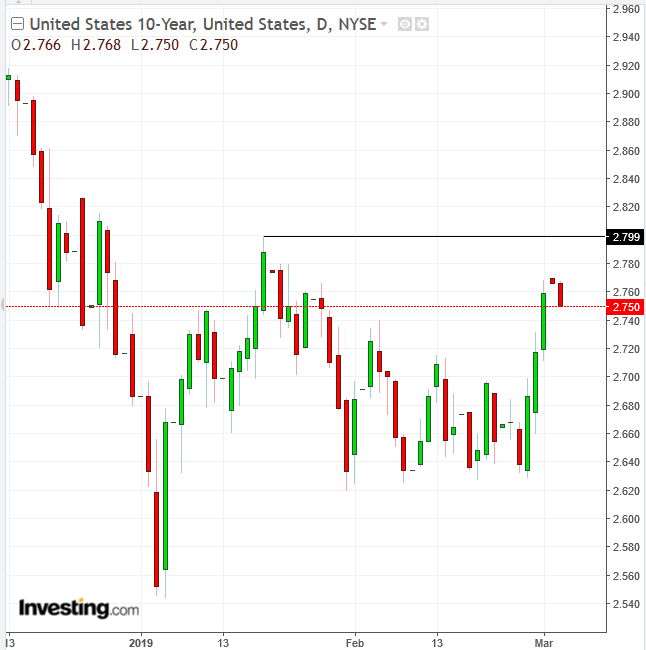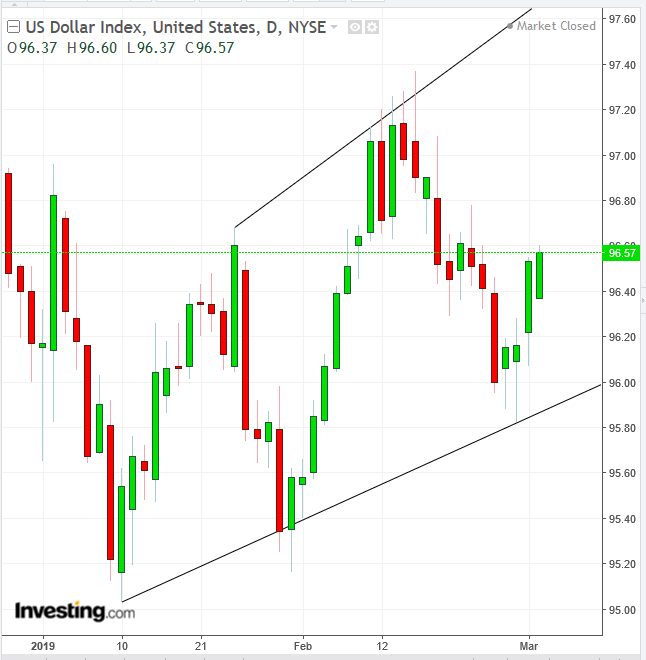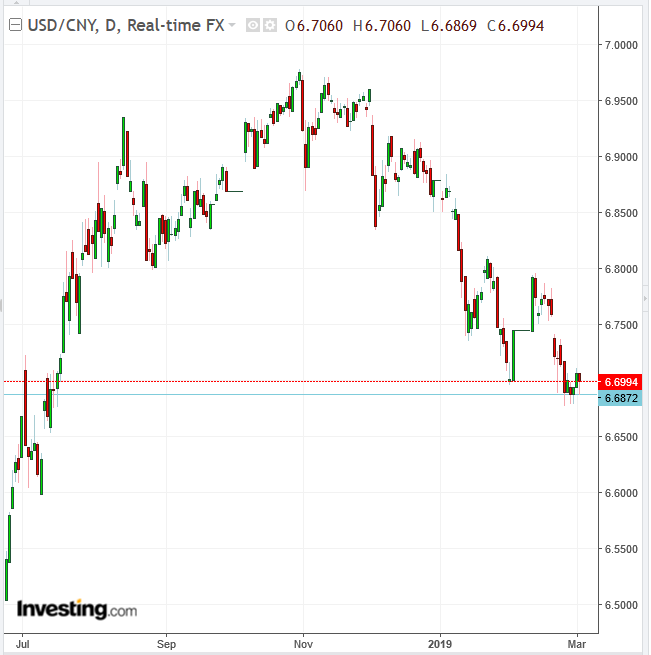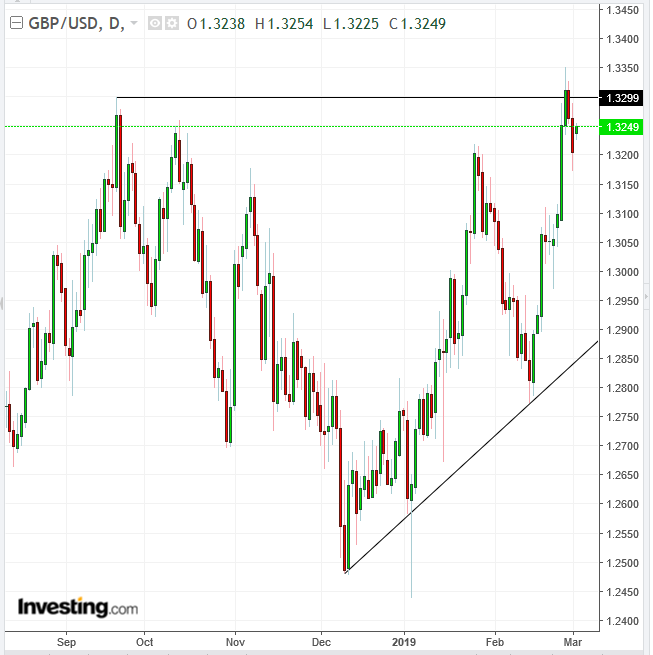- U.S. futures, global stocks climb on hopes for an imminent trade deal
- Yields drop on rising Treasury demand
- Pound jumps on easing prospects of a no-deal Brexit
Key Events
Global stocks and futures on the S&P 500, Dow and NASDAQ 100 climbed and the Chinese yuan dropped this morning, as hopes for an imminent U.S.-China trade deal gained ground after Beijing reportedly committed to stepping up intellectual-property rights protection and to purchasing a substantial amount of U.S. goods.
The STOXX Europe 600 edged higher with technology and mining shares, nearing a five-month high. The pan-European benchmark gapped up at the open (+0.21%) for the second consecutive session, and shortly extended gains to 0.46%, where it was trading near the top of the day.
In the earlier Asian session, China’s Shanghai Composite (+1.12%) outperformed on the more solid prospects of a trade breakthrough, followed by Japan’s Nikkei 225 (+1.02%).
.
Global Financial Affairs
Meanwhile, the yield on 10-year Treasurys dropped on increased demand for U.S. bonds. That should raise a red flag for equity bulls: why is demand for Treasurys edging higher in a risk-on day? Technically, yields found resistance by the Jan. 18 highs, which means that some investors don’t think they can go any higher. In other words, they are bullish on Treasurys—an omen for stocks.

In FX trading, the dollar rebounded from an earlier decline, extending a rally to the fourth day in a push to stretch out its short-term uptrend.

The yuan is inching lower, hovering 0.18% below its Feb. 27 close—the lowest since July 16—as investors gain more trust in China's pledges. A weak renminbi also alleviates one of the U.S.’s core issues with China. We have often pointed out that the Chinese currency had been weakening in line with higher prospects for a trade war resolution.

The pound jumped, snapping out of a two-day rut when the price hit the resistance of the Sep. 20 highs, amid optimism U.K. lawmakers would support Prime Minister Theresa May's redrafted proposals to avert a hard Brexit.
Meanwhile, WTI recovered to about $56 a barrel on signs of slowing U.S. output growth, while OPEC+ producers deepened their cutbacks. Technically, the price has been consolidating since breaking out of the Feb. 4 highs’ resistance. The next level for a breakout is the upside of the $57.80s, following through with the uptrend line since the December bottom.
Overall, the direction of global markets, including commodities markets, is riding on the U.S.-China trade deal—and quite a few things could go wrong there. On one hand, we are wondering: should the U.S. and China actually sign a substantial deal, how much of it would have already been priced in? On the other hand, what would happen to markets in the case of a diplomatic setback, or even a fallout? Maybe that’s the reasoning that is driving appetite for Treasurys today.
Up Ahead
- The National People’s Congress opens in Beijing on Tuesday, with Premier of the State Council Li Keqiang announcing targets for economic growth.
- Also on Tuesday, Australia’s central bank sets policy, while Governor Philip Lowe gives a speech on the housing market on Wednesday.
- Bank of Canada is expected to keep rates on hold on Wednesday due to lingering uncertainty on housing and investment, though Governor Stephen Poloz is expected to stick to his message that borrowing costs eventually need to head higher.
- European Central Bank policy makers are expected to leave rates unchanged on Thursday, amid a deteriorating economic outlook. President Mario Draghi will hold a news conference after the decision.
- The U.S. jobs report coming out on Friday may show hiring subsided in February. Nonfarm payrolls are forecast to have increased by 185,000 and the jobless rate to have slipped to 3.9 %.
Market Moves
Stocks
- The STOXX 600 gained 0.5%.
- Futures on the S&P 500 rose 0.3%.
- The MSCI Asia Pacific Index advanced 0.4%, the largest gain in a week.
- The MSCI Emerging Markets Index edged 0.2% higher, the biggest gain in a week.
Currencies
- The Dollar Index ticked 0.01% higher, rebounding from a 0.17% decline.
- The euro fell 0.1%.
- The British pound climbed 0.2%.
- The Japanese yen dropped less than 0.05% to 111.93 per dollar, the weakest in almost 11 weeks.
- The offshore yuan gained 0.3% to 6.6972 per dollar, the largest gain in a week.
Bonds
- The yield on 10-year Treasurys rose less than one basis point to 2.75%.
- Germany’s 10-year yield was unchanged at 0.18%.
- Britain’s 10-year yield rose one basis point to 1.306%.
Commodities
- The Bloomberg Commodity Index fell less than 0.05% to 80.94.
- LME nickel gained 0.7% to $13,285 per metric ton.
- West Texas Intermediate crude advanced 0.1% to $55.86 a barrel.
